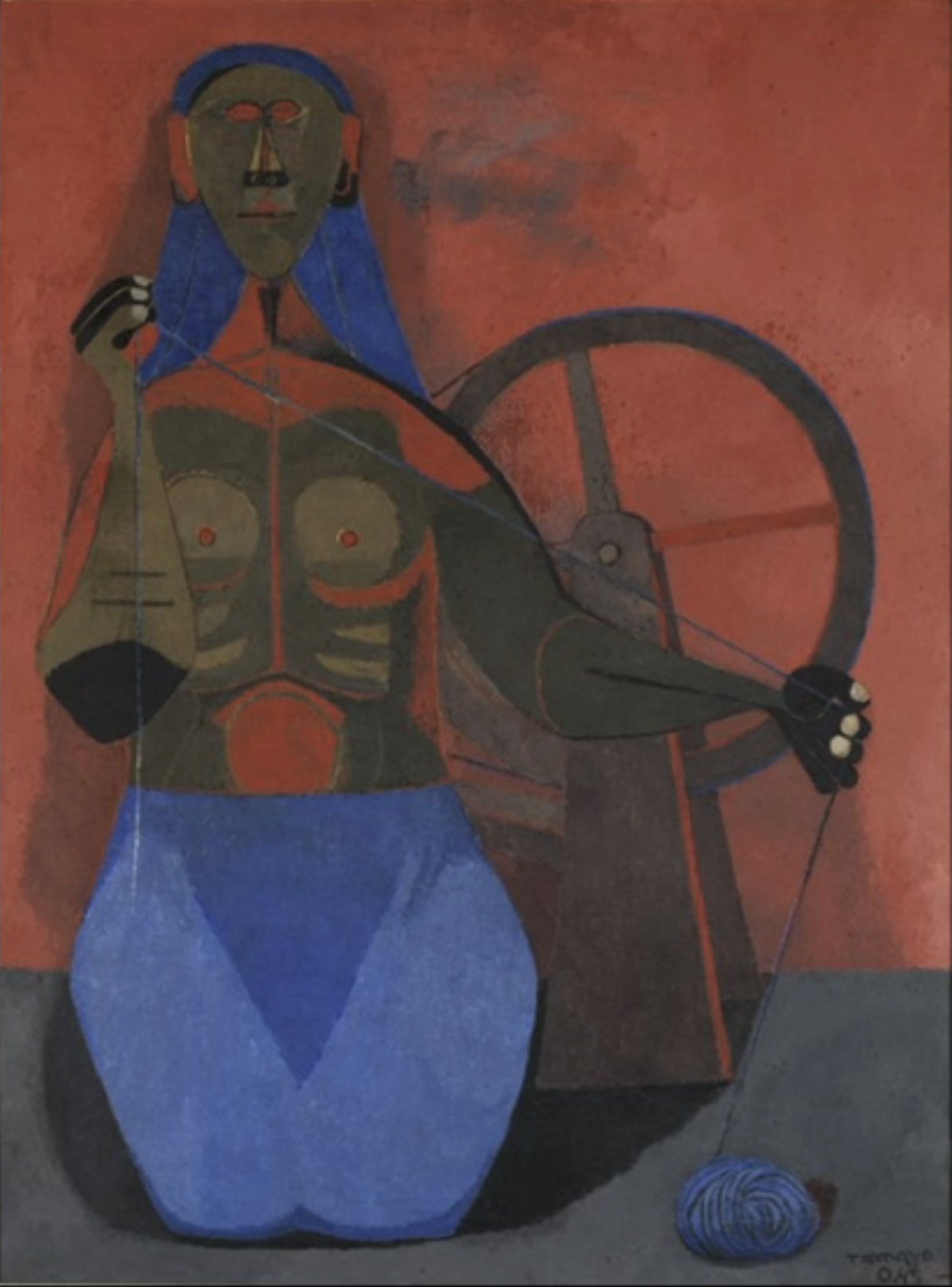Julian Kreimer on Rufino Tamayo
Rufino Tamayo, Woman Spinning (Mujer hilando), 1943, Oil on canvas, 43 x 32 inches
When Rufino Tamayo painted Woman Spinning in 1943, he had been living in New York for four years, and teaching at the Dalton School on the Upper East Side (where he taught Helen Frankenthaler). Financier Roy Neuberger bought the painting and eventually installed it in his eponymous museum at SUNY Purchase, next door and up a flight of stairs from the building where I’ve taught since 2009. In the five years since I first saw it, it has exerted a magnetic pull that isn’t so much a beckoning, for that word suggests an invitation, or demand, as a kind of thirst on my part to stand before it.
The thirst, oddly enough, is directed mostly at the dry, granular surface that most closely approximates unglazed ceramic. The matte surface is profoundly austere, not in the sense of renunciation, but of having enough. Shimmery surfaces, like those of Fragonard, present an erotic component: the illusion of paint reflecting and shimmering, firing and withholding in synch with the process of perception. Think of the French painter’s come-hither surface with its promise of bubble-bath foliage and slippery silks. Tamayo here scrupulously avoids that. Each shape and surface is its own color—both in the sense that we can say the background is brick-red, or the spinner’s right elbow is a warm black—but also in the sense that the physical pigment used in each shape is as important as any other quality it contains, which likely has much to do with Tamayo’s practice of grinding his own paints.
It’s as if the mineral quality of the paint, the pigment, has been carefully weighed and allotted to each area, and could be accounted for, tabulated, as a mineral just as much as it could be considered a form or even part of a representation. (The very small exception is the ball of yarn by her knees, where that equilibrium between physical being and description falters, and shifts to the side of depiction). The brick red is about brick red. The austerity manages a kind of being-in-itself that contains no pretense. It doesn’t ask for our attention, rather its very self-sufficiency inspires fascination in us.
The figure herself, like the spinning wheel behind her, is composed of the sort of jigsaw-piece shapes common in cubist-inflected work of the 30s and 40s. The spaces between her fingers resolve into hourglasses, and her unclothed ribs and breasts are broken down into shapes that resemble the rounded letters of an unknown alphabet. She holds in both hands a blue thread that dissolves on her blue skirt. Since working bare-chested was unheard of in Tamayo’s native Oaxaca, the curators suggest that her partial nudity links the figure to the Meso-American goddess Tlazolteotl, “the great spinner and weaver” and fertility goddess. The theme, too, is hard to disentangle from Velazquez’s depiction of the goddess Athena spinning alongside the mortal Arachne, before turning her into a spider. Both goddesses elevate the work of weaving, for so many millennia one of the primary mediums of creative expression for women all over the world.
Just as the picture balances paint’s physicality with its depictive utility, it achieves a synthesis between seemingly opposed ideas of creative work: it attracts without beckoning; it presents a woman who turns to us but does not need our presence for her self-definition, who is naked but not sexualized, and for whom creative expression comes through a medium of repetitive work. I imagine that Tamayo himself, a Mexican painter who lived abroad for much of his career, understood what it meant to be a whole individual unified in his many parts. Each time I come back to the painting, my longing is answered by her straight gaze, neither smile nor scowl, her presentation of thread, and the bracing, deeply satisfying reply of a painting that reminds me that we are each both clay and creator.
Julian Kreimer, Heroic Trio, 2013, oil on linen, 36 x 36 inches


